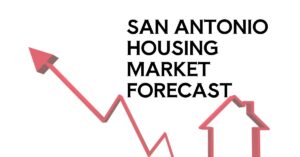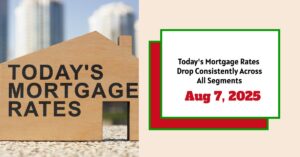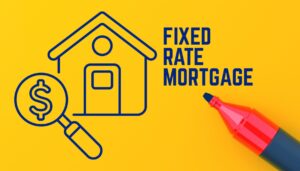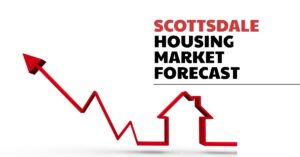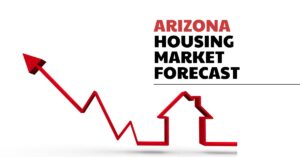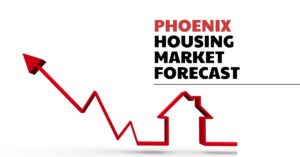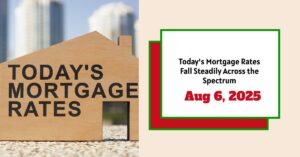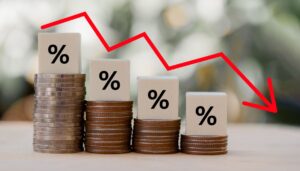The Milwaukee housing market is currently holding its own, proving to be one of the most resilient in the nation. Even with the broader U.S. market cooling down, Milwaukee is showing impressive growth, with home sales up 12% year-over-year and prices up 8.2%. Let's dive into why Milwaukee is bucking the trend, according to a new report from Redfin, and what you can expect if you're planning to buy, sell, or invest in Cream City real estate.
Milwaukee Housing Market Trends in 2025: Still a Hot Spot?
Why Milwaukee is Outperforming the Nation
As someone who has been keeping a close eye on the real estate market for years, I've noticed a fascinating shift. While the Sun Belt states that boomed during the pandemic are now experiencing a slowdown, the Rust Belt is making a comeback. Milwaukee, located in the heart of the Rust Belt, is a prime example of this resurgence.
There are several factors contributing to this:
- Location, Location, Location: Milwaukee's strategic location in the Midwest makes it a desirable place to live. It's close to major cities like Chicago and has a lower cost of living compared to coastal hubs. This is a big win for buyers seeking affordability.
- Affordability Matters: Even with rising prices, Milwaukee is still more affordable than many other major U.S. cities. This is a major draw for both first-time homebuyers and those looking to relocate from more expensive areas.
- Demand Outpacing Supply: While inventory is increasing slightly, it's not keeping pace with demand. This creates a competitive market where homes are selling quickly and often above the list price.
- Mortgage Rate Advantages: Many homeowners don't want to lose their ultra-low mortgage rates from previous years so they are staying put.
Milwaukee's Housing Market: Key Trends in 2025
Let's break down some key metrics to get a clearer picture of what's happening in the Milwaukee real estate scene:
| Metric | Milwaukee, WI | National Average |
|---|---|---|
| Median Price Per Square Foot Change (Year-Over-Year) | 8.2% | 0.5% |
| Homes Sold Change (Year-Over-Year) | 12.0% | 3.8% |
| Inventory Change (Year-Over-Year) | 3.2% | 11.8% |
| Median Days on Market | 39 | 40 |
| Share of Homes Under Contract in Two Weeks | 62.4% | 38.0% |
As you can see, Milwaukee is significantly outperforming the national average in several key areas. Prices are rising at a much faster rate, homes are selling more quickly, and a larger percentage of homes are going under contract within two weeks. This all points to a strong seller's market.
The Milwaukee Advantage: What Makes It Unique
What sets Milwaukee apart from other booming cities like Las Vegas or Miami? For starters, Milwaukee offers a unique blend of urban amenities and Midwestern charm. You get access to big-city perks without the overwhelming costs that come with New York or L.A. Also, the strong presence of manufacturing gives it better economic stability than other smaller cities.
Here are some key factors that stand out to me:
- The “Chicago Effect”: Milwaukee's proximity to Chicago is a major selling point. Many people who work in Chicago choose to live in Milwaukee for its lower cost of living and more relaxed atmosphere.
- A Growing Job Market: Milwaukee's economy is diverse, with strengths in manufacturing, healthcare, and technology. This creates a stable job market that attracts new residents.
- A Thriving Cultural Scene: From the Milwaukee Art Museum to the Summerfest music festival, Milwaukee offers a wide range of cultural attractions.
Expert Insights: What the Locals Are Saying
I always like to hear what the local real estate agents are saying on the ground. According to W.J. Eulberg, a Redfin Premier agent in Milwaukee, the market is “red hot,” but not quite “white hot” like during the peak of the pandemic. Even though the frenzy has calmed down a bit, homes are still getting snatched up quickly due to the inventory shortage.
He shared a recent success story about a listing in South Milwaukee that received seven offers within a few days and sold for $50,000 over the list price. This is a prime example of how competitive the Milwaukee market remains.
Challenges and Opportunities in the Milwaukee Market
While the Milwaukee housing market is thriving, it's not without its challenges. One of the biggest issues is the lack of new construction. There's not much room to build in Milwaukee proper, and many of the new homes that are being built are not affordable for first-time homebuyers.
Here's my take on the current landscape:
- Opportunity for Investors: Investors may find potential in revitalizing older properties or exploring development opportunities in the surrounding suburbs.
- Importance of Fair Pricing: Sellers need to price their homes competitively to attract buyers in today's market. Overpriced homes are likely to sit on the market for longer.Fair pricing = quick sale
- Emphasis on Home Condition: Homes that are in good condition and well-maintained are more likely to sell quickly and for a higher price. This may require some elbow grease, but the efforts pay off.
Milwaukee Housing Market Forecast: Riding the Wave Through 2026
After a somewhat sluggish period, is the Milwaukee housing market ready to kick things up a notch? As the saying goes, “past performance is not indicative of future results” but it sure does give us a solid foundation to work with. Second quarter data from the Greater Milwaukee Association of REALTORS® (GMAR) reveals an interesting story. While we saw a solid 1.6% increase in home sales compared to last year, a deeper dive combined with a touch of foresight suggests the Milwaukee housing market forecast for 2025-2026 is nuanced, so, let's get into it!
2025: A Tale of Two Quarters
The first half of 2025 paints a mixed picture:
- Overall Growth: The four-county metro area saw a 1.6% increase in total home sales.
- June Surge: June specifically experienced a significant 13.7% jump in sales compared to June of the previous year. This is an encouraging sign, but we can’t get ahead of ourselves just yet.It should be highlighted that this June jump is relative to the weaker sales numbers recorded from 2024.
- The Inventory Squeeze: Despite increased listings, inventory is still critically low, with only about 3.2 months of supply available. If you take away listings with pending offers, you go down to only 1.4 months of inventory.This means buyer competition will remain intense for the foreseeable future.
- Price Appreciation: Average prices in the metro area are up 5.4%, hitting $457,573. Milwaukee County saw a whopping 9.9% price increase! This indicates strong seller control in the market. With more cash for fewer houses, prices are likely to remain high.
Here is a quick view of the summary
| Area | 2nd Quarter Sales (% Change) | June Sales (% Change) | 2nd Quarter Listings (% Change) | June Listings (% Change) |
|---|---|---|---|---|
| Metro Area | 1.6% | 13.7% | 4.4% | 11.2% |
| Milwaukee Cnty | -2.5% | 10.3% | 3.2% | 14.8% |
| Waukesha Cnty | 8.5% | 20.7% | 7.5% | 7.4% |
The Inventory Puzzle: Why Is It So Low?
According to GMAR, the low inventory is not due to a lack of buyers, but rather a lack of homes for sale. This is driven by two key factors:
- Interest Rate Lock-In: Many homeowners are hesitant to sell because it would mean giving up their low mortgage rates from before mid-2022. This reduces the number of homes hitting the market.
- Limited New Construction: The area is not building enough new homes to keep up with demand. New construction is vital to ease price pressures and meet the needs of the growing population.To reach a balanced market, we would need an additional 3,910 units added to the inventory.
Forces at Play: Why Milwaukee and Why Now?
Milwaukee's housing market challenges are amplified by broader trends:
- Generational Demand: Millennials and Gen Z are entering the housing market in full force, competing with Baby Boomers looking to downsize. This combination of first-time buyers and empty-nesters creates huge demand, which is not easily met.
- Construction Challenges: New home construction is slower than it's been historically.
- Economic Landscape: The broader economic situation has a tremendous effect on consumers. This can affect their ability to buy and to sell.
- Government Policies: Government decisions at many level have an effect on housing.
My Forecast for the Milwaukee Housing Market:
Taking all of these factors in consideration, here is what it looks like Milwaukee's housing market will yield in 2025-2026:
- Continued Price Growth (Moderated): I expect prices to continue rising, but at a slower pace than the nearly 10% increase seen in Milwaukee Co. It should drop to maybe 5-7% increase. The initial surge is likely over, because high prices will eventually temper demand.
- Low Inventory Persists: Unfortunately, it's likely that inventory challenges will continue into 2026, unless there is a significant change in interest rates, new construction volume, or a major economic shift.
- Competition Remains Intense: With low inventory, buyer competition will remain high, meaning that homes located on prime real estate like Waukesha will continue to be in high demand by growing families.
- Slightly More Balanced Market: Expect a slight shift towards a more balanced market, where buyers have slightly more bargaining power. However, it will still favor sellers because if inventory doesn't keep up with sales, the low supply will drive costs up.
How to navigate the market if the trends come true:
| Buyer | Seller |
|---|---|
| Act Fast: Be prepared to make quick decisions when you find a home you love. | Price Strategically: Work with a REALTOR® to price your home competitively. |
| Get Pre-Approved: A pre-approval can make your offer more attractive. | Highlight Home’s Advantages: Showcase any updates or unique features. |
| Consider Contingency Funds Have additional funds set aside in case a problem is flagged on property inspection. | Ensure Curb Appeal Ensure landscaping and exterior of home are appealing to set a good first impression. |
The Long-Term Implications
Milwaukee's housing shortage has implications beyond just the current market conditions:
- Wealth Inequality: If people remain in rental units, they'll miss out on the wealth-building potential of homeownership, which further exacerbates wealth gaps.
- Economic Impact: Limiting homeownership can impact the local economy, as homeowners tend to invest more in their communities.
Should You Invest in the Milwaukee Real Estate Market?
Milwaukee is a city in Wisconsin that offers real estate investors a lot of opportunities. With a population of over 590,000 people, it is the largest city in the state and offers a diverse range of neighborhoods, property types, and investment opportunities. Here are some of the top reasons to consider investing in Milwaukee's real estate market:
- Affordability: Compared to other major metropolitan areas in the United States, Milwaukee offers relatively affordable real estate prices. This means that investors can find deals on both residential and commercial properties that are priced lower than similar properties in other cities.
- Strong rental demand: Milwaukee has a strong rental market, with a high percentage of residents who rent their homes. According to data from the U.S. Census Bureau, over 50% of Milwaukee's residents are renters. This creates a significant demand for rental properties, particularly in areas that are close to downtown, universities, or other major employers.
- Growing economy: Milwaukee has a diverse economy that is experiencing steady growth. The city is home to a range of industries, including manufacturing, healthcare, finance, and education. According to the Milwaukee Economic Development Corporation, the city has seen a 13.5% increase in employment since 2010, and the unemployment rate has dropped from 9.5% in 2010 to 3.5% in 2022. A growing economy typically translates to increased demand for real estate, both from businesses and from residents.
- Low vacancy rates: With strong demand for rental properties, it's not surprising that Milwaukee has a relatively low vacancy rate. According to data from RentCafe, the overall vacancy rate in Milwaukee was 5.5% in 2021, which is lower than the national average of 6.8%.
- Urban revitalization: Milwaukee's downtown and surrounding neighborhoods have undergone a significant revitalization in recent years, with new development projects and investments in public spaces. The city has also seen an increase in younger residents who are attracted to urban living. This has led to an increase in demand for properties in walkable neighborhoods that offer amenities like restaurants, bars, and shopping.
- Favorable landlord-tenant laws: Wisconsin has landlord-friendly laws that make it easier for property owners to manage their rental properties. For example, landlords can evict tenants for non-payment of rent with just a five-day notice, and there are no limits on the amount that landlords can charge for security deposits. This can make investing in rental properties less risky for investors.
- Availability of financing: Like many other cities, Milwaukee has a range of financing options available for real estate investors. Local banks and credit unions offer commercial real estate loans, and the city has a range of public-private partnerships that provide funding for development projects. Additionally, there are a variety of federal and state programs that offer to finance affordable housing projects and other real estate development initiatives.
Therefore, Milwaukee's real estate market offers several compelling reasons to invest. The city has a strong economy, affordable prices, a growing rental market, and a diverse population. These factors, combined with tax incentives and a robust infrastructure, make Milwaukee an attractive location for real estate investors. However, like any investment, there are risks involved, and investors should carefully consider their options before investing.

